When it’s too Hot to Mow Your Lawn!
A healthy lawn provides you and your family with a green, lush and welcoming environment. However, when temperatures rise and the harsh summer sun beats down on your lawn, the ...

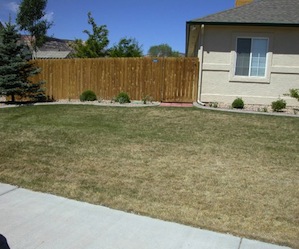 Your lawn needs a soft base to stay healthy – once soil becomes hard it stops the grass from putting down new roots to gather the moisture, nutrients and oxygen it needs to continue growing.
Your lawn needs a soft base to stay healthy – once soil becomes hard it stops the grass from putting down new roots to gather the moisture, nutrients and oxygen it needs to continue growing.
Some soil types are more likely to become hard over time, whether it’s through frequent foot or vehicle traffic, as the compaction squashes it down and reduces the space between soil particles.
Heavily compacted soils are denser and will have poorer infiltration and drainage which can damage your lawn.
But there are some things you can do to prevent or treat hard soil and ensure your lawn has the best foundation for future good health.
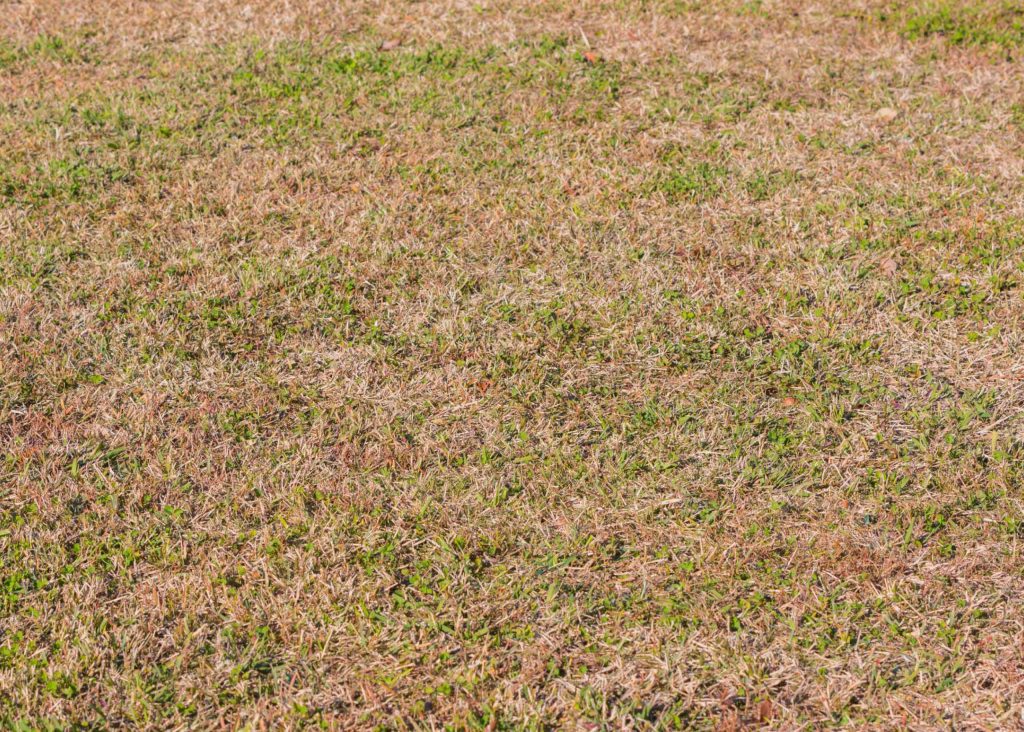 Compaction compresses the soil particles and the spaces between them, known as pores, which help transport water and air to plants.
Compaction compresses the soil particles and the spaces between them, known as pores, which help transport water and air to plants.
The roots are the engine room of a plant, gathering the moisture, nutrients and oxygen needed for photosynthesis and growth.
In a compacted soil, the roots are less able to feed the plant and it will quickly wilt and die off.
Signs of compaction can include:
Clay-based soils and those containing low levels of organic matter are more prone to compaction.
There are three main mechanical methods of addressing hard soil: aeration, coring and tillage.
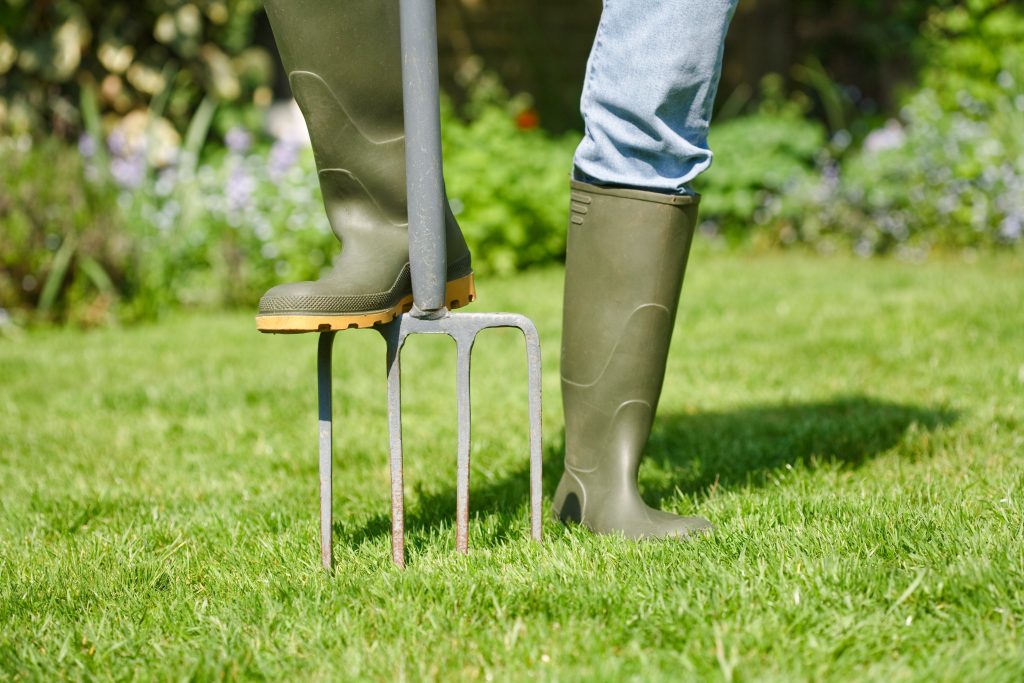 Aeration can improve soil health by easing compaction and stimulating the activity of beneficial microbes.
Aeration can improve soil health by easing compaction and stimulating the activity of beneficial microbes.
In minor cases of compaction, aeration once a year can be enough to fix the problem, but wait until the lawn has dried out after heavy rain to ensure you don’t make it worse.
There’s a guide to aerating your lawn here.
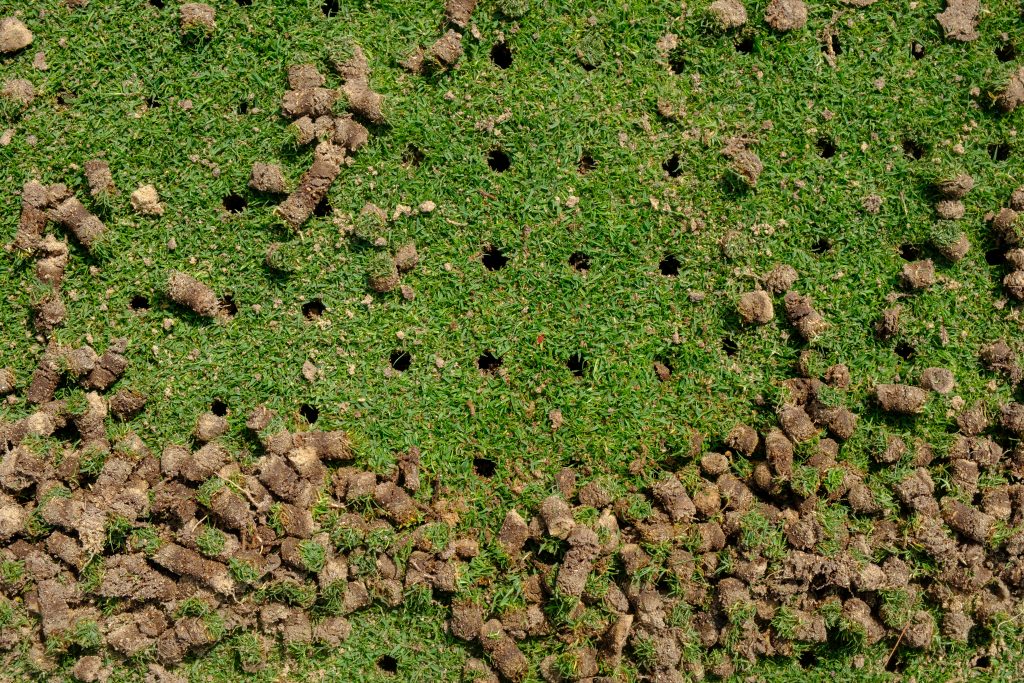 Coring involves using a manual tool or machine to punch bigger holes in your lawn, removing plugs of grass and dirt.
Coring involves using a manual tool or machine to punch bigger holes in your lawn, removing plugs of grass and dirt.
Lawn coring is best done in spring or autumn and followed by application of wetting agent and a quality lawn fertiliser.
For more information about lawn coring, take a look at our guide to How To Core A Lawn here.
If you have access to a rotary hoe, and your lawn is almost dead, try spreading a generous quantity of sand or sandy loam mixed with a gypsum product across it.
Use the rotary hoe to cultivate the surface and mix the layers. Give it time to settle down and you can then start over.
If you’re thinking about laying new turf over the top, first read about the pros and cons of this approach here.
Gypsum is a natural mineral and effective soil amendment, which can reduce soil compaction, improve soil structure, increase air movement, stop cracking and crusting, and prevent runoff, especially in clay-based soils.
It’s also a good source of the trace elements Calcium and Sulfur, which are essential for root development and plant growth.
The best time to apply gypsum is before you lay new turf, because it can take several months to improve soil structure.
But it can still be applied to established lawns after you’ve carried out aerating or lawn coring.
Using a lawn spreader, apply the gypsum granules at the rate recommended on the label and rake it in.
Depending on the product this can vary from 5kg to 10kg per 100 square metres, but should be less than you would use on a garden bed.
There’s more information about using Gypsum for your Lawn here.
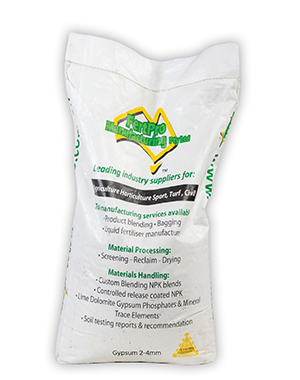
Granular Gypsum Course Grade 2-4mm 25kg is a top of the range soil amendment suitable for Zoysia, Kikuyu, Couch and Buffalo grasses.
SHOP NOW